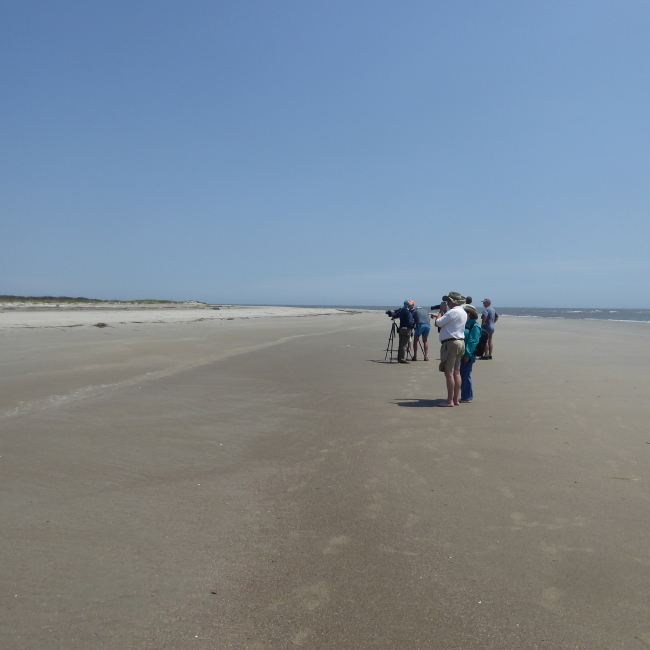
We had the privilege of birding last week with ornithologist and author Scott Weidensaul. He is a fine congenial fellow who knows everything, and while he is there he gives a splendid talk on some ornithological topic every evening after supper.
This is a photo travelogue of our second visit to Little Saint Simons Island on the Georgia coast for this year's birding week there. I'll post my bird list at the bottom of this post.
Little Saint Simons is not for everybody. It's a barrier island nature preserve, Southern Maritime Forest habitat and vast salt and brackish marshes. It's rustic and therefore not inexpensive, and you have to entertain yourself unless you partake of the planned outings (ie kayaking through the marshes, birding, fishing trips. Booze and family-style meals included. You can take a bike, kayak or motor skiff out anytime you want, or fish and swim on the ocean beach. The self-serve bar is open 24 hrs/day. There are 3 excellent naturalists available all the time for hikes. The bugs weren't too bad this year but I did donate my share of A+ blood to the cause of mosquito conservation.
Two innovations have been adding a/c to the cabins, and revamping the unheated pool with a gator-proof fence. It used to be a downer to find a 6' gator in the pool. An unwelcome innovation (for me) is the "healthy eating" trend instead of the traditional Southern fare that I love. I like to stay at least 6' away from kale, cilantro, organic produce, and veggie wraps or I break out in a bad case of annoyance.
Cool things about this very special place with photos, below...
- 30 guests maximum, no day-trippers allowed, and 11,000 acres to yourself with hiking/biking trails. Why own a second place when you can hop on United Airline anytime and get abused go to special places whenever you want? Ownership is over-rated, burdensome.
- There are no stores, just the lodge and a few cabins and sheds. You can't bring a car and the "ferry" is a small outboard. The service is excellent and attentive, 5-star. There are no door keys - no reason to lock your room.
- A 7-mile beach all to yourself for hiking, biking on the hard sand, birding. Swim and sun nude if you want - nobody is there.
- All meals are at long tables, family style. No menu choices, and mealtime is mealtime. Don't be late. Within 24 hrs everybody knows everybody,and they are all interesting, smart, pleasant, outdoorsy people because nobody other than that would be there. Cocktail hour and dinner are jolly affairs. Because it's Dixie, ladies pretty themselves up for cocktail hour.
- Around 1/3rd of the guests are from the American South, the rest from all over the US and some from Europe. We dined with people from Vermont, Atlanta, Utah, California, and Boston.
- The Lodge is a 100 year-old hunting camp, and the few cabins are of similar vintage. There are 2 new cabins and I don't think they will add any more. All cabins have working fireplaces.
- There are plenty of skeeters, snakes, and gators, but these are easily dealt with
- The island is growing in size each year thanks to local currents. We joke that it would have been a good real estate investment for that reason. The geography is interesting because you can see old dunes gradually become new uplands, and the beach move further out to sea.
- As an almost entirely undeveloped barrier island, LSS is an important migratory stop-over for the migrating shorebirds, most of which which are headed to the arctic, and also an important breeding spot for locally-breeding, dune-breeding shorebirds like Piping Plovers, Wilson's Plover, and Oystercatchers.
- That's not to mention the local wading breeders: Roseate Spoonbill, Wood Stork, and all of the North American herons and egrets. You can get so close to them that it is like a zoo.
- I would not go in summer. Too hot, muggy, and buggy. The ocean was a perfect swimming temp. last week.
- Hunting? In duck season, you need to be a friend of Mr. Paulson. I wish I were.
- The owners of the island, Hank and Wendy Paulson, have recently donated the island, or the development rights, to The Nature Conservancy so it will never be developed like so many of the Atlantic barrier islands. A fine legacy for them.
We had to stay at a nice place on Amelia Island due to flight and ferry timing. Except for the quaint old town in Fernandina, not too fond of Amelia Island:
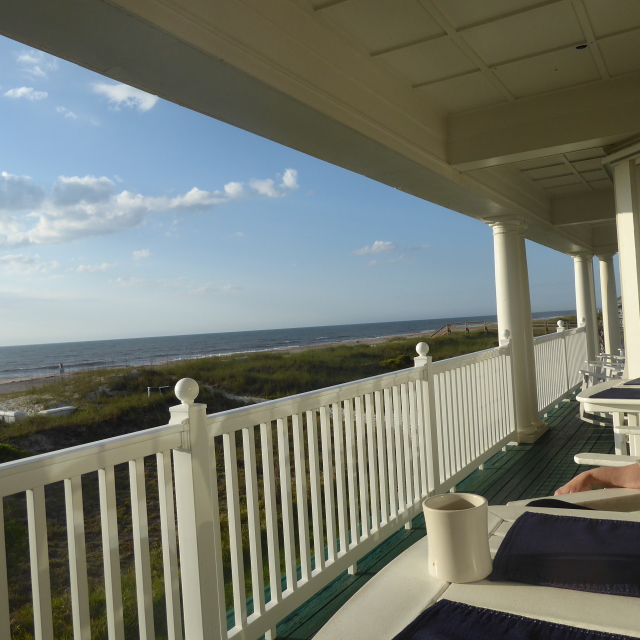
View from our cabin's deck on LSS:
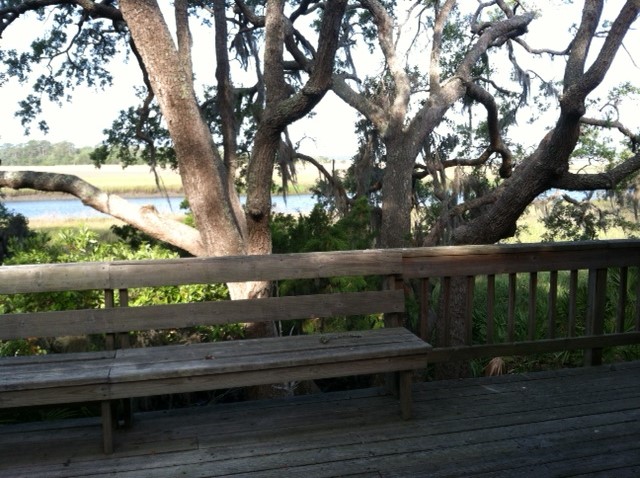
Upland maritime forest: redbay and palmetto understory, Live Oak and Slash Pine above. Otherwise, marshlands
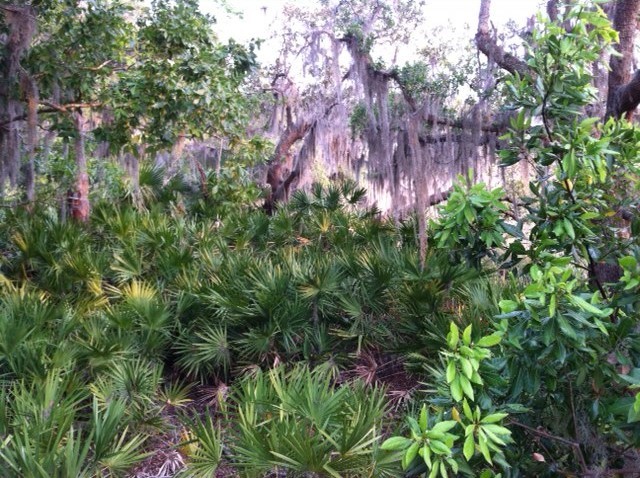
Set up for an al fresco lunch
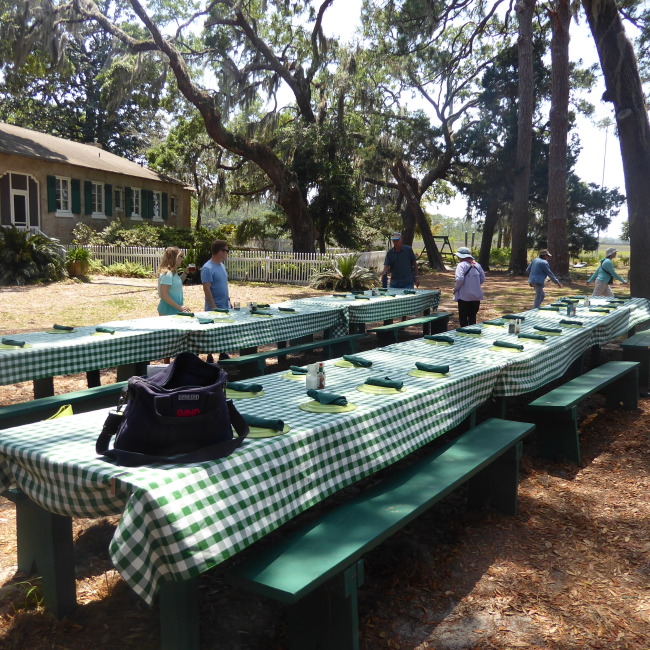
Lodge


Living room of our cabin (one of the two newer ones)

Marsh view

Planned fun. Lunch that day was a shrimp boil at the beach. Wonderful stuff.
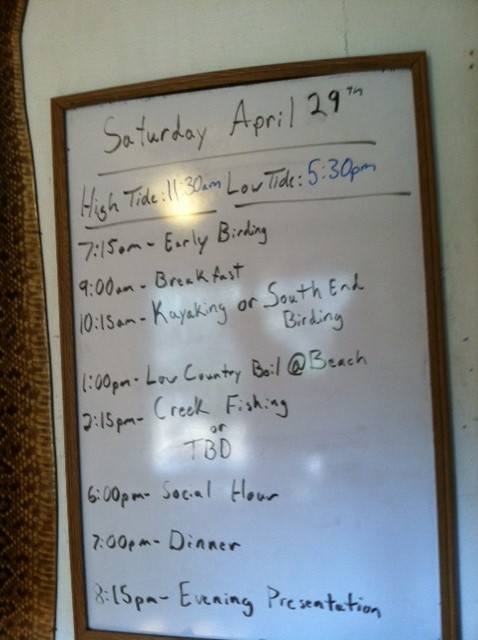
A bike path

Bike path to the ocean beach. Sometimes you have to dodge basking snakes and small gators when biking, which adds to the fun. Somebody accidentally ran over a Glass Lizard (Glass Snake), which was the first one I have ever seen. Lizards without legs.
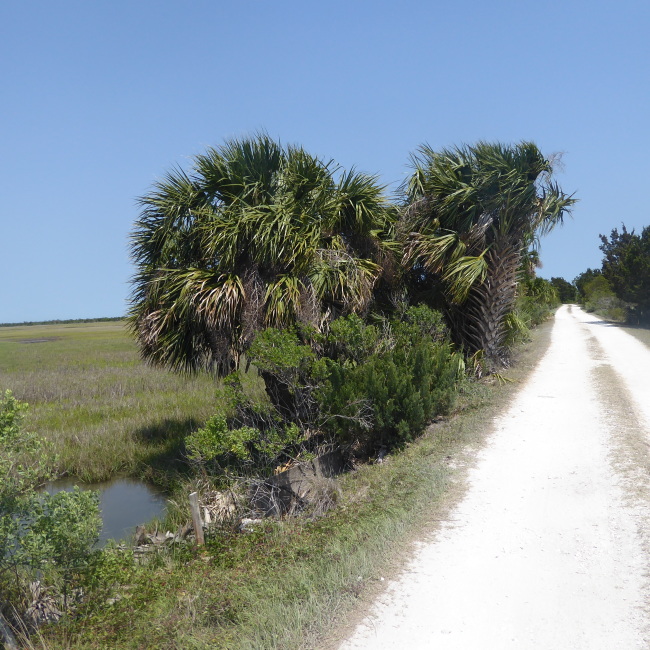
My bird list from last week:
Mottled Duck
Wood Stork
Brown Pelican
Least Bittern
GB Heron
Great Egret
Snowy Egret
Tricolored Heron
Green Heron
Cattle Egret
White ibis
Glossy ibis
BC Night Heron
Roseate Spoonbill
Red-Trailed Hawk
Black Vulture
Turkey Vulture
Clapper Rail
Common Gallinule
Black Bellied Plover
Wilson's Plover
Semipalm. Plover
Killdeer
A. Oystercatcher
Black-Necked Stilt
Spotted Sandpiper
G. Yellowlegs
L. Yellowlegs
Willet
Whimbrel
Marbled Godwit
Ruddy Turnstone
Red Knot
Sanderling
Least Sandpiper
Dunlin
Dowitcher
Laughing Gull
Herring Gull
Ring Billed Gull
Least Tern
Gull-Billed Tern
Forster's Tern
Royal Tern
Black Skimmer
Mourning Dove
N. Cardinal
Screech Owl
Barred Owl
Chimney Swift
RT Hummingbird
Red-bellied Woodpecker
Downy WP
Pileated WP
Great Crested Flycatcher
Fish Crow
Carolina Chickadee
Carolina Wren
Marsh Wren
Blue-Grey Gnatcatcher
N Mockingbird
Common Yellowthroat
N Parula
Yellow-throated
Towhee
Summer Tanager
N Cardinal
Painted Bunting
Bobolink
RW Blackbird
Boat-tailed Grackle
Cowbird
Baltimore Oriole
I was surprised/disappointed in the few warbler species. Probably all farther north already. And where are the Red-Headed Woodpeckers?

